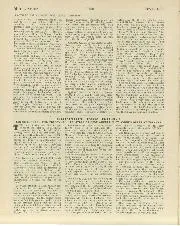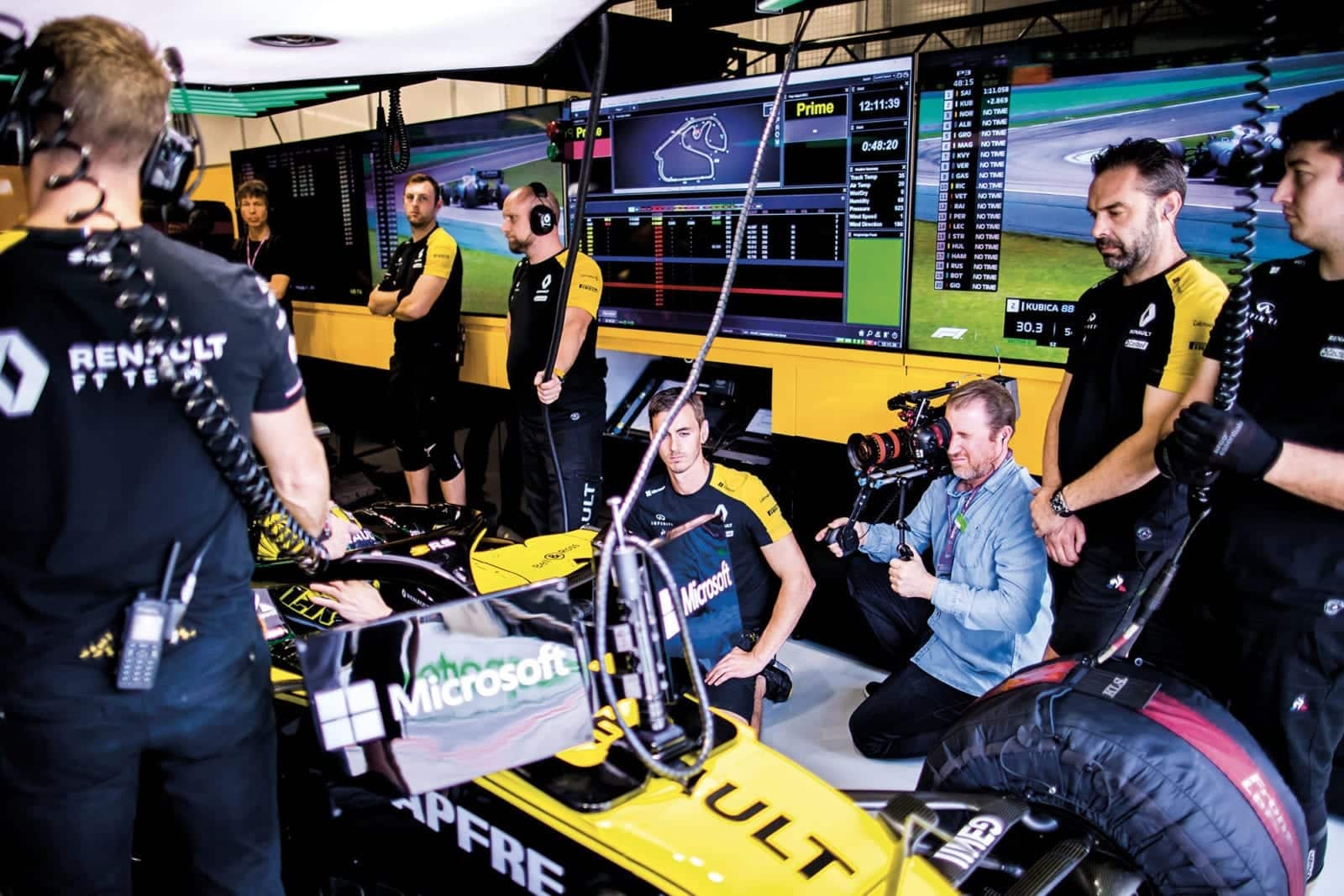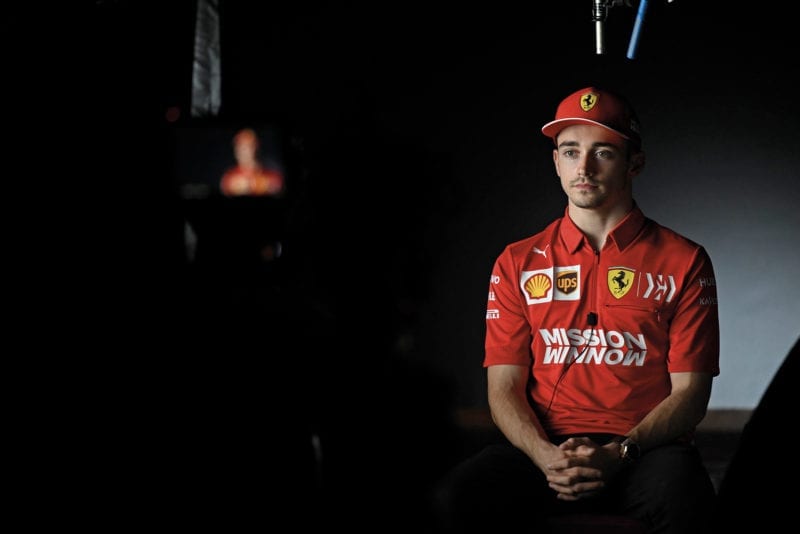
SUPPORT FOR E.R.A !
SUPPORT POR BIG CHANGES IN THE PERSONNEL: TRUSTEES CANNOT ACCEPT H. W. COOK'S OFFER AT PRESENT THE fate of the new E.R.A. still hangs in the balance, for the initial…

Renault and Hülkenberg provide one of Drive to Survive's more human moments
Vladimir Rys
Lewis Hamilton casts a distressed look across his team’s briefing area, observing a room that has taken on the atmosphere of a funeral parlour. The drivers are ashen-faced, Toto Wolff is at
breaking point, and the rest of the team are almost dabbing their eyes. As they mourn over a disastrous weekend, the dreadful reality finally hits them: for once, Mercedes hasn’t won the race. This is the drama of Drive to Survive’s second season.
The first series was a hit, peeling away Formula 1’s often robotic spectacle to reveal the contract discussions, clashes and emotions rarely seen to viewers. So, does Drive to Survive live up to renewed expectation for its difficult second season?
At first, the dramatic gears fail to mesh, a tiresome first episode labouring through constant team introductions and explanations of how F1 works. But then there’s the return of one of season one’s heroes, Haas team boss Günther Steiner. The swear jar fills up once again. His assessment of one race, “f***ing everything’s f***ed up”, should perhaps be the title of his team’s highly engaging episode.
After a promising start in Melbourne, the season quickly falls apart when it emerges the Haas car overconsumes its tyres. The team then shows great surprise when William Storey, the highly eccentric entrepreneur who markets an energy drink, later pulls his sponsorship. When the Haas boss takes his anger out on an unsuspecting onion while dissecting the team’s problems in his kitchen one wonders whether a Steiner cooking show might be the next Netflix spin-off.
Metaphors abound on a sailing trip with Haas driver Kevin Magnussen. Is he ‘all at sea’? The famously combative Dane complains a bit more about its rubbish car. It could be argued that the success of the Haas story in the Netflix series is indicative of a wider problem in F1 itself: while F1 broadcasts were often criticised for missing the midfield fight last year, those teams star in Drive to Survive.

Ferrari’s inclusion was headline-grabbing, but episode is disappointing
If who’s winning the race isn’t that interesting, is it even worth watching? While Mercedes runs alone at the front, Haas’s Wacky Races re-enactment provides the real action. Many will find themselves binge-watching on regardless. The series captivates further with behind-the-scenes narrative. The pain of Pierre Gasly losing his Red Bull seat and Nico Hülkenberg exiting F1 stand out.
As Red Bull boss Christian Horner notes, Gasly gets off to a poor start with multiple testing accidents, and the series takes you to the point where the driver appears on the verge of tears after realising yet another below-par drive has ended his time at the team. The notoriously empathetic Horner’s main method of encouragement seems to be to try and unnerve and intimidate his new driver. His motivational techniques trickle down to his staff as they attempt to lift Gasly with helpful comments such as: ‘Go faster Pierre’, as the driver wilts faster than warm camembert.
As for Hülkenberg, he finds himself carrying the can for Renault’s failings. When team boss Cyril Abiteboul suggests that Hülkenberg may be “cursed” in his pursuit of a first career podium, one feels that the driver might be a scapegoat for a slightly rudderless works team.
Daniel Ricciardo does his best to put the German off in a publicity session by saying his team-mate’s name in various comedy accents before then belittling his almost unparalleled pre-F1 achievements. What’s a Hulk to do? The Renault driver’s radio messages become ever more squealy as his F1 dream begins to slip from his grasp.
“The whole Ferrari episode rather feels like a well-choreographed PR exercise”
An episode that is partly a tribute to Anthoine Hubert is touching, with Gasly speaking emotionally about the loss of his great friend. This kind of emotion, rarely seen in public from F1 personnel, brings an unfamiliar warmth to the paddock. Relatives of various drivers are witness to Hubert’s accident, with Drive to Survive carefully highlighting the dangers of motor sport.
Season two also features Mercedes and Ferrari for the first time, with the former featured for two episodes and the latter for one. In the German Grand Prix Mercedes episode, the team pulls out the stops to commemorate 125 years of involvement in motor sport, one of which involves team members dressing up in 1950s costume. After a big build-up, Mercedes proceed to deliver an It’s a Knockout-style grand prix performance, with wheels missing in the pits, both cars hitting the barrier and Hamilton asking if he can park the car and go home. In the middle of all this, Wolff plays up to his ‘big boss’ reputation by intimidating other team principals, slapping down members of the press and brokering crucial driver deals. While Steiner endears himself to many with his onscreen portrayal, Wolff comes across as a much sterner character than the smooth media-savvy persona he normally projects.
This episode is another which shows the series’ strength in displaying the excitement and anguish of F1, even if the team’s reaction is a tad melodramatic. Viewers deal with, rather than watch, the insipid Ferrari instalment, where Sebastian Vettel, Charles Leclerc and others wax lyrical about “what it means to drive for Ferrari”. We then sit through a dull US GP, following the two drivers around as they attend various promotional engagements, conveniently ignoring the rising tension between the two that was a hallmark of 2019. When the race starts, proceedings are marginally livened up by one of Vettel’s rear wheels falling off. The whole episode seems a well-choreographed PR exercise, one that could be played at Shell garages…
A painful, but also fascinating watch, is the implosion of Williams, with the car in bits at its Grove factory only hours before it is supposed to be in Barcelona for the first test. Some serious straws are being clutched at when deputy team principal Claire Williams asks an overworked mechanic if he’s looking forward to the new team clothing arriving. Somehow, you can’t imagine Patrick Head posing the same question. This episode also features one of the series’ great moments, as technical director Paddy Lowe nervously approaches Williams on her arrival. At first, Williams ignores him, before turning to give a look so icy Catalunya may freeze over.
Some aspects of the series’ presentation become repetitive, especially considering this is a second series. One would be forgiven for thinking Will Buxton is the only person in the F1 community who can provide analytical commentary. Regular F1 viewers will also do well to prevent skin-crawling after the hundredth injection of fake race commentary, but the overall aesthetic is sound.
Drive to Survive is worth watching, whether you’re an avid fan or a casual observer. True, those with a basic knowledge of grand prix racing will have to endure explanations as to how F1 works every five minutes, but the level of detail and behind-the-scenes footage still makes it highly viewable.